
A NIkon D1 dwarfing an F55. (The F55 is about the same size as Nikon's smallest digital SLRs today.)
from Shutter, by Lewis Collard

A NIkon D1 dwarfing an F55. (The
F55 is about the same size as Nikon's smallest digital SLRs
today.)
This article was written in 2012. Please consider this a time capsule and have fun!
This is 1999's Nikon D1, which was Nikon's most important camera of the 1990s, and one of the most important cameras made by anyone.
The Nikon D1 has rightly been called the world's first practical digital SLR.
It was not the first commercially-available digital SLR. That was Kodak's F3-based DCS100 in 1991. Nor was it even Nikon's first digital SLR; that was the weird Nikon E2 in 1995. It certainly wasn't the first electronic still SLR camera; that would probably be the SB-70s back for the Minolta Maxxum 7000 in 1987.
The D1 was, however, the world's first digital camera that was fast, tough, and good enough to replace 35mm cameras for news and sports. It was the first DSLR that sensible people would want to use, and that the richer end of normal people could afford.
The D1 was small and light. Until 1999, digital SLR cameras were monstrosities; usually Nikon or Canon 35mm SLRs with gargantuan Kodak digital backs bolted on, or weird bulky things like the Nikon E2. The D1 was the first digital SLR to fit into a truly 35mm-sized package; the D1 is an F5 on crack, which itself was a Canon T90 on crack. (It's obviously gigantic and weighs a ton compared to modern digital SLRs, even the massive D2H, D3 and D4 that followed it.)

For context: Kodak's monstrous DCS 420 from 1996. Photo copyright ©
2005 Jarle Aasland, all rights reserved, used here with his kind
permission. He has a great website
about even more ancient digital cameras!
The D1 was cheap, at $5,580 US (that's about $7,700 in 2012 US dollars, or £5000 in 2012 quids). None of the competition cost less than $10,000 US, and they were were not as good. Kodak made their own F5-on-crack, also in 1999: the Kodak DCS 620. This was a worse camera with less resolution that sold for about twice the price, and didn't even come with batteries.
The D1 was fast. It hummed along at 4.5 frames per second all the way up till the end of its buffer, it powered on instantly like a film camera, and it autofocused as fast and accurately as an F5. None of its competition could do all these things.
The D1 was tough; it's an all-metal beast that you can use as a hammer. With a few exceptions, every other digital SLR was built around amateur cameras that were not designed for professional abuse (like Kodak's DCS 315 and 330, based on Nikon's dreadful Pronea APS cameras).
The D1 wasn't the first digital SLR, but all of the above combined made it the first that sensible people would want to use.
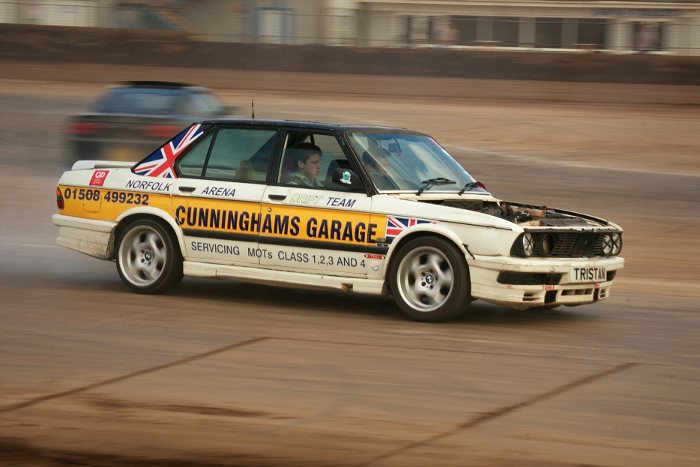
Shot with a Nikon D1, 55-200mm VR at 85mm, 1/80 at f/18 and ISO 200.
The body is a big, solid chunk of metal that also works as an anvil.
Superficially, the body is a mix of F5 and F100.
It's got a huge vertical grip, like an F5, and has the lesser-used controls behind a flip-down door, like an F5. It's also immensely heavy and well-built, like the F5, and is almost exactly the same size.
The D1 can be charged with the EH-3 quick charger used for the F100.
The D1 does not have a removable prism, which the F5 has and the F100 does not. It takes F100 focusing screens, and runs at 4.5fps, like the F100.
The rear AF-ON and AE-L/AF-L are more like those of the F100, and not like the F5's.
I suspect the D1 was an all-new design in this count, not simply an F5 with digital bits, or a toughed-up F100. (I still call it "an F5 on crack" because I find it funny.)
Shot with a Nikon D1, Nikon 55-200mm VR at 66mm, 1/80 at f/18 and
ISO 200.
The actual number of photosites on the CCD is in excess of 10 million. The final resolution of an image was 2.7 megapixels, with (presumably) four red, green or blue photosites averaged to make a red, green or blue pixel in the raw sensor data.
2.7 megapixels doesn't sound like a lot, and it isn't (but hey, it's still more than the Lytro, ha ha ha). Just as with every top-of-the-range professional digital SLR Nikon has made since, Nikon prioritised shooting speed over resolution. (And just as with every professional digital SLR since, the back-seat drivers worried about whether this was enough resolution even as news, sports and wildlife magazines were filling with photos taken with it.)
Unlike any digital SLR made today, the D1 can simply turn its sensor on and off. This allows it to bypass the physical shutter at high (above 1/250) shutter speeds. The upshot of this is that it has the fastest shutter speed of any film or digital SLR ever made: 1/16,000. It can also sync with flash faster than every digital SLR made today: 1/500, or all the way up to 1/16,000 if you use a flash gun that doesn't communicate with the camera.
Today's £5000 Nikon D4 can't do this; it syncs at a mere 1/250, which is the same as the Canon T90 from 1986, and worse than my Voigtlander Vito B from 1954.
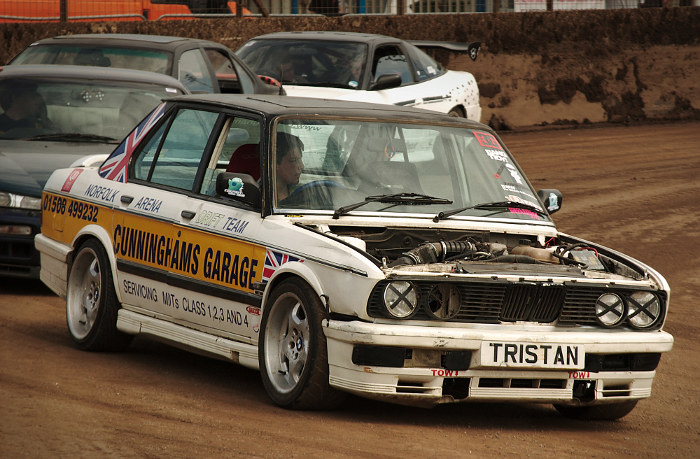
Shot with a Nikon D1, 55-200mm VR at 160mm, 1/320 at f/9.5 and ISO 200.
Battery power was the D1's major flaw, compared to film cameras or digital SLRs made since. It was forgiveable in 1999, just because every other digital SLR camera was much more awful in many more ways.
The batteries were colossal:

Despite its size, the bad Ni-Mh battery was never good for more than a couple of hundred shots, and didn't take long for them to stop taking a full charge. Worse, when they got low (which they did, rather prematurely), the camera would happily fire away but would only record blank frames to the card. As Ken Rockwell (pbuh) explains:
[It] doesn't turn off soon enough when the battery gets low, so half of the electronics (the camera mechanics) keep running and you think you're shooting, but the DSP, specifically the data compression board, stops processing the images that you think are being recorded! You shoot, and get blank frames!
This wasn't fixed with the D1H, which had the same battery but simply refused to fire at all if the battery was low, which was not really an improvement. This was really fixed with the beastly D2H, which used a much better lithium ion battery pack good for thousands of shots.
Amazingly, aftermarket batteries are still available for the D1, and work a charm, probably better than Nikon's batteries ever did. Whatever you think about China's flagrant disregard for patents and trade secrets, one of the many good things to have come out of that great country is that bad old cameras like the D1 become usable again, because small Chinese manufacturers are not terrified of lawsuits coming out of manufacturing batteries for them.
Mine is made in China and distributed by PowerSmart. It works great; I have a short short review of it right here. It's far better than what I've read about the original EN-4 batteries; it gets 444 shots on a charge (34 JPEGs, the rest NEFs) rather than about 250. Because of the D1's defective-from-the-factory electronics, the camera sometimes tells you that you've run out of memory card space when your battery is too low to shoot.
Smarter people build their own battery packs from a dead D1 battery pack and 18650 cells. I will try this soon.
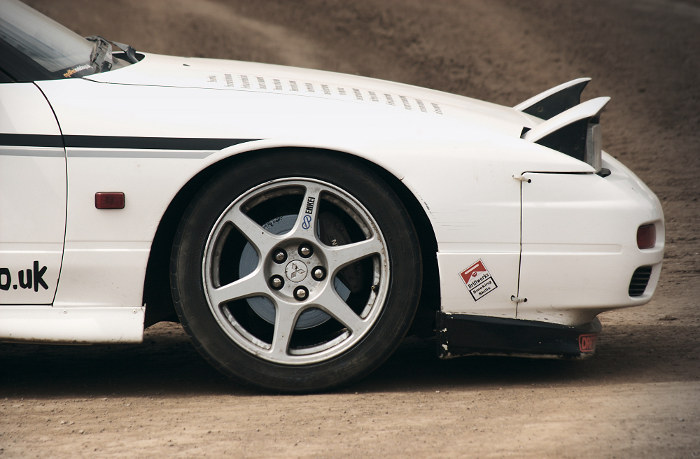
Shot with a Nikon D1, 55-200mm VR at 200mm, 1/320 at f/10 and ISO 200.
AF is awesomely fast and very accurate, as you'd expect from a professional Nikon camera. It uses the same AF sensor system as the F5 and F100.
The D1 transfers an enormous amount of torque if you have a mechanically-driven autofocus lens. Enormous, such that you can actually see cheap screw-type lenses like my worn-out 50mm f/1.8D shift the image in the viewfinder as the torque from the screw drive twists, distorts, and otherwise tries to destroy the plastic mechanics of the lens.
With a 50mm f/1.8D, I measure its screw motor as being maybe a tiny bit faster than my D2H was when worn-out and half-dead. This doesn't tell you how well it'll do in real shooting with moving subjects; the D2H might be a little bit better on that count.
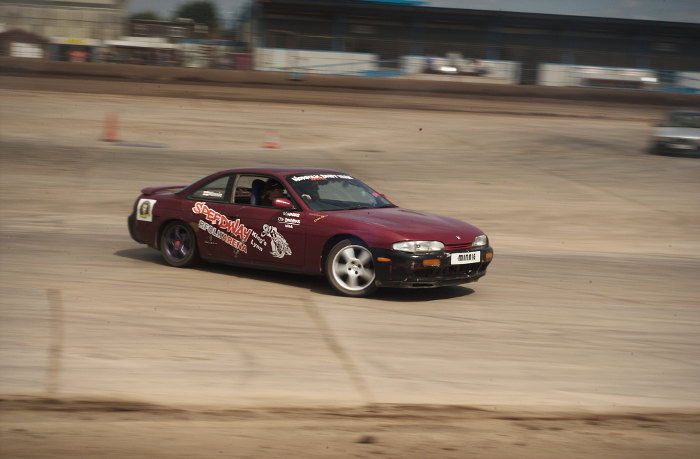
Shot with a Nikon D1, Nikon 50mm f/1.8D, 1/100 at f/22 and ISO 200.
The D1 works with just about every Nikon lens made since 1977, manual- and auto-focus. You won't get matrix metering with manual-focus AI, AI-S and Series E lenses, only centre-weighted and spot, which is tolerable.
AF works with mechanical AF, AF-I, and AF-S lenses. VR also works.
Flash is something else. The D1 series brought a new TTL flash system called D-TTL, as the old TTL system for film cameras (measuring reflections from the film and cutting off the flash once enough light had been measured) would not work on the D1's CCD.
The D1 only worked properly with one flash at the time of its introduction: the SB-28DX. Other flashes of the time would work in non-TTL auto. Apparently D-TTL sucked so bad that non-TTL auto actually worked better anyway.
Later the SB-50 and SB-80 came along, which did D-TTL. The SB-600 and SB-800 were iTTL flashes that were also D-TTL capable.
Nikon ditched D-TTL just four years later, in 2003, for the perfect iTTL system. Backward-compatible camera support for D-TTL was killed off after the D2 series, which means that people who spooned out the money for D-TTL flashes found that they were mostly useless on nearly every digital camera made after 2003.
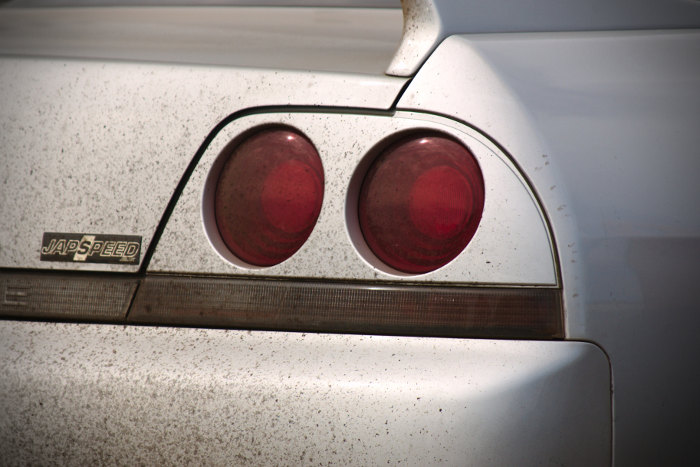
Shot with a Nikon D1, 55-200mm VR at 200mm, 1/350 at f/9.5 and ISO 200.
JPEGs from the camera look pretty bad. Raw files carefully processed with Darktable look great. For all I know the D1 might be single-handedly responsible for the common notion that one must shoot raw and giving JPEGs such a bad name among photographers.
Here's what I mean:

Top shot: Nikon D1 FINE JPEG, Auto tone compensation, 1/80 at
f/6.3, NTSC input colour profile assigned in post to be as fair
to it as possible. Bottom shot: same exposure, converted from
NEF with Darktable.
You can ignore the colour differences; this was just me being too lazy to make them match. What you want to look at is the brighter leaves; on the JPEG, they're irrecoverably, almost totally, blown out! (The blacks are crushed too, but I can live with that; pushing black to where it should be is one thing I almost always do in post. I could push the blacks on the raw shot even darker and make it look less flat, and I could do that without losing any dynamic range, but it would still be a boring test shot.)
You don't need to look at 100% crops to see the problem, but let's do that anyway:

Same shot, D1 FINE JPEG (left) vs raw file converted with Darktable (right).
Any JPEG artifacts you may see by looking too hard
are a result of compressing this image for the web, not of
the camera.
The D1 is very, very loud.
It runs just a bit more than half as fast as my 8-frames-per-second D2H, but it makes so much noise that you wouldn't know it. A good amount of the noise comes from the aperture stop-down mechanism rebounding; on the return stroke it's almost as loud as the shutter and so the camera almost sounds like it's running at 9fps!
Using a D1 is exactly like using an F5. These were digital baby steps, so some stuff seems weird today (and might have seemed less weird to someone transitioning from an F5).
PLAY was a mode on the advance-mode dial. Switching to this stops you from shooting altogether. You can look at your shots by hitting the MONITOR (today equivalent to "Play") button. You can't zoom in on files at all (though the D1's AF is so fast and accurate that you can have faith in it). Oddly, files are zoomed in slightly on playback.
Just like an F5, changing lesser-used settings can only be done via custom functions identified by numbers, not with menus with names. Everyone shooting these cameras would print out a copy of pages 74-75 of the manual and carry it with them.
All the D1 series put ISO, white balance and quality controls behind a little magnetically-latched flip-down door, in the same place as the little flip-down door on the F5. Obviously, white balance and image quality controls didn't exist on the F5, so these took over from the flash sync mode and bracketing buttons, which were moved to where the rewind crank is on the F5.
These buttons double as controls in PLAY mode. Later cameras added dedicated buttons for this next to the LCD.
"Off" on the power switch really does mean "off". Specifically, it shuts down the circuitry that takes care of writing the buffer to the memory card, so it's actually possible to lose data by treating it like a modern DSLR and turning it off before the buffer is clear.
The rear AF-point-selection switch lock is a mechanical lock, not an electronic one. This is not wrong, just different (but makes it more obvious by feel whether it is locked or not).
The MODE and exposure compensation buttons are squishy artificial rubber, not solid plastic.
It always looks better shot with -0.7 exposure compensation. I don't know why this is.

Shot with a Nikon D1, 55-200mm VR at 80mm, 1/320 at f/8.5 and ISO 200.
The D1H and D1X were improved versions built on the same chassis. They ditched the D1's awful custom functions, and put them in menus with names. They still didn't fix the battery problem, and they still had the same weird control layout.
The D100 replaced the D1 series for normal people in 2002. It was a better, smaller, lighter camera with more resolution for less money.
The D2H in 2003 was the official replacement for the D1. It was lighter, sleeker, a tiny bit smaller, but even better-built than the D1. The D2H fixed all of the D1-series weirdness, and went thousands (rather than hundreds) of shots on a charge. It also had perfect ergonomics that no camera made since has beaten.
Nikon agrees that the D2H was perfect: 2007's full-frame D3 replaced the D2H, and had almost identical ergonomics to the D2H.
2012's D4 replaced the D3. It didn't change things much from the D2H except to make one thing worse: it didn't have a dedicated rear AF-point-mode-selection-mode switch.
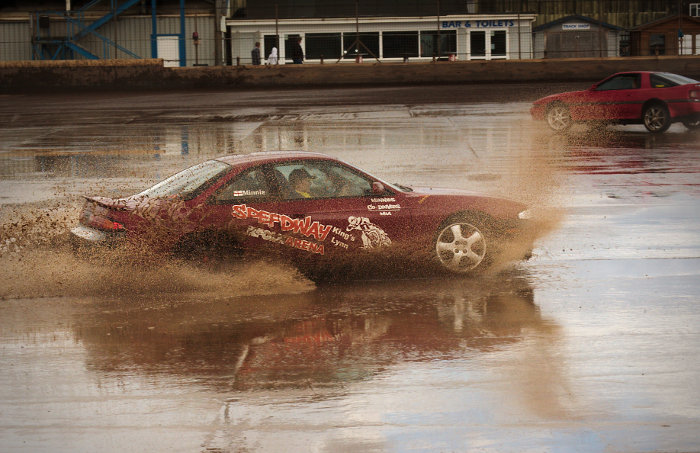
Taken with a Nikon D1 and Nikon 55-200mm VR at 68mm,
Nissin 360TW flash,
1/500 at f/11 and ISO 200.
A reader of my site sent me this. I wouldn't buy one, except as a joke.
Prices of the D1 reflect reality, unlike the prices of the D2H (the D2H still tends towards "old professional camera", rather than "utterly obsolete, kilo-and-a-half 4.1 megapixel brick"). You can pick one up for less than a hundred quid, or for free, if you have my sense of humour.
If you're using one as a joke to get hits to your website, as I have, then this might help you:
Thanks to Sam Lee for sending me his beautiful D1.
Thanks to everyone from the Norfolk Arena Drift Team for the free-to-attend drift practice days they hold at least every month so I could put this old camera through its paces with the sort of thing it was designed for.
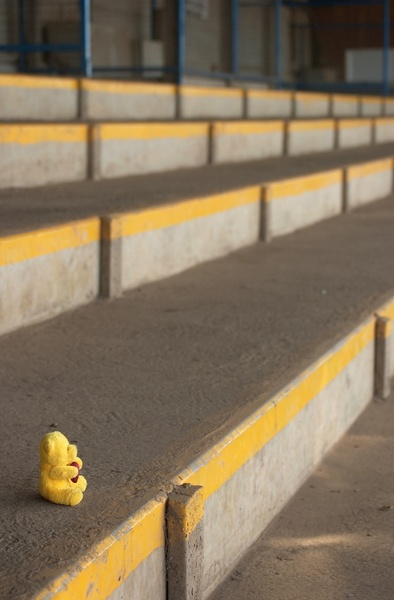
Tiny teddy
goes to the Norfolk Arena. Nikon D1, 55-200mm VR at 55mm, 1/160 at
f/6.3 and ISO 200.